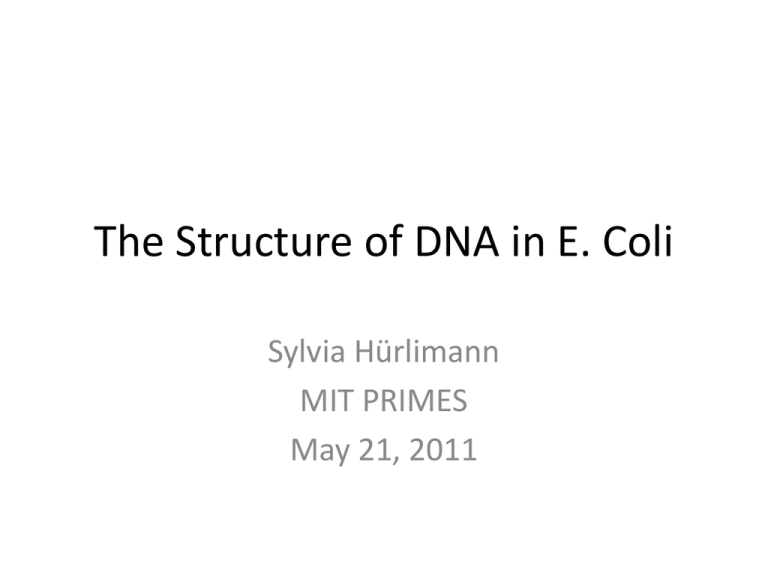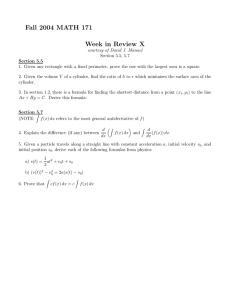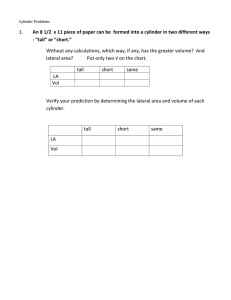The Structure of DNA in E. Coli Sylvia Hürlimann MIT PRIMES
advertisement

The Structure of DNA in E. Coli Sylvia Hürlimann MIT PRIMES May 21, 2011 Description of E. Coli and its genome • E. Coli has a circular genome that is roughly six million base pairs long • The genome is confined within a section of the cell called the nucleoid, which is roughly shaped like a cylinder. Experimental Data • The E. coli nucleoid is experimentally shown to be linearly organized along the axis of the nucleoid One of our model conformations Genomic distance from origin of replication Wiggins P A et al. PNAS 2010;107:4991-4995 Can a polymer model explain E. coli genomic organization? • Previous authors have suggested that the genome can be modeled as a polymer • In this model, the structure of the genome is determined by three factors: – intranucleoid interactions (stiffness, volume interactions) – confinement of the chromosome within the nucleoid – the tethering of the DNA at two ends of the nucleoid • Previous studies, however, never tested these predictions with a detailed simulation. Wiggins P A et al. PNAS 2010;107:4991-4995 • We place a polymer inside a cylinder and tether the ends of the chain to either end of the cylinder. After running the simulation for many time steps, we calculate the average x position of each monomer • Vary parameters such as: – whether the ends are tethered – the size of the cylinder – the stiffness (or flexibility) of the chain – whether the chain can overlap itself radius How can we test a detailed polymer model? Length or x-axis Results: effects of tethering Average x position With tethering Average x position Without tethering Monomer • The genome lacks structure along the axis of the cylinder • Supports the claim that the tethering of the chain to the ends of the nucleoid is important to structure 50x60x60 Average x position 50x40x40 Almost linear Average x position Cylinder Size 50x20x20 Average x position Results: varying cylinder size Less structured Monomer Interpretation • As the diameter of the cylinder increases, the DNA becomes gradually less linearly organized similarly to what happened when the stiffness of the chain increased • Supports the argument that confinement of the DNA is an important factor in its structure 0.50*kbond Average x position 0.25*kbond Almost linear Average x position Stiffness of the chain 0*kbond Average x position Simulation results: varying stiffness Less structured 0 Monomer 1000 0.50*kbond Average x position 0.25*kbond Almost linear Average x position Stiffness of the chain 0*kbond Average x position Simulation results: varying stiffness (without volume interactions) Less structured 0 Monomer 1000 Interpretation • Results with and without volume interactions show the same general trend but stiffness has a greater affect when there are no volume interactions • This implies that volume interactions do not play a large role in the organization of the chain Future directions • How does the shape and size of the cylinder affect the structure? • How does the density of the chain affect the structure? • Do these results still hold for longer chains? And many thanks to my mentors Geoffrey Fudenberg and Maxim Imakaev as well as to Leonid Mirny





